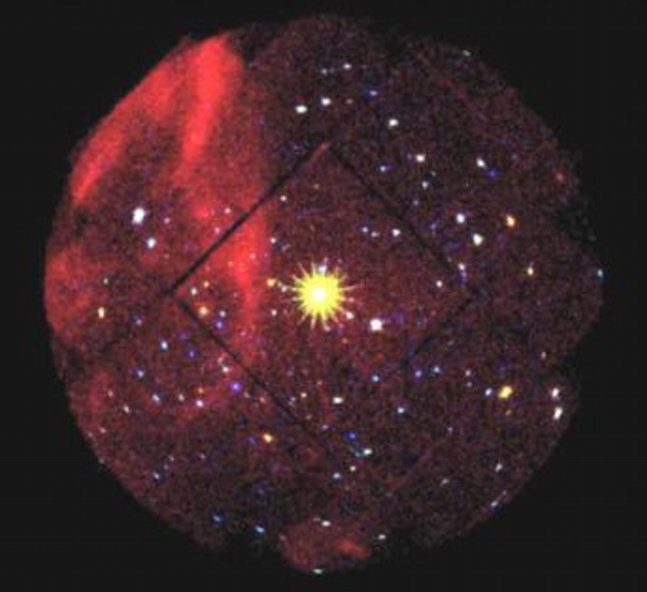
 Credit: Prof. G. Bignami (CESR); ESA
Credit: Prof. G. Bignami (CESR); ESA
A Weaker Field
After exploding, massive stars can leave behind dense "cinders". These "cinders"
are the remains of the star's core, compressed down to a few kilometers in size,
so dense that atomic particles are squeezed together into neutrons. Though
"dead", these neutron stars still evolve: they are born hot, spinning rapidly,
then spin down and cool as they age. A key property to understanding how neutron
stars evolve is the star's magnetic field strength. Young neutron stars are
thought to have extremely strong magnetic fields due to their rapid rotation.
This spinning field interacts with the surrounding region to help slow the star,
while at the same time producing high energy emission. Astronomers have
previously inferred the strength of the magnetic field from indirect evidence
(like the rate of spindown). A
new observation by the XMM-Newton X-ray
observatory has now provided astronomers with a direct measure of the
magnetic field of a young neutron star. This star, called
1E1207.4-5209, is
shown as the yellow source in the false-color image above (which was obtained by
XMM-Newton's EPIC
cameras). XMM-Newton's exquisite sensitivity to X-rays has allowed
astronomers to identify features called cyclotron lines in 1E1207.4-5209's X-ray
emission. These cyclotron lines are produced as X-rays are absorbed by electrons
which spiral around the magnetic field of the neutron star, allowing astronomers
to precisely measure the magnetic field strength. Surprisingly, the measured
magnetic field is much weaker than expected, implying that another source of
friction must be associated with the star in order to explain the star's
observed spindown.
Last Week *
HEA Dictionary * Archive
* Search HEAPOW
* Education
Each week the HEASARC
brings you new, exciting and beautiful images from X-ray and Gamma ray
astronomy. Check back each week and be sure to check out the HEAPOW archive!
Page Author: Dr. Michael F. Corcoran
Last modified ¥


